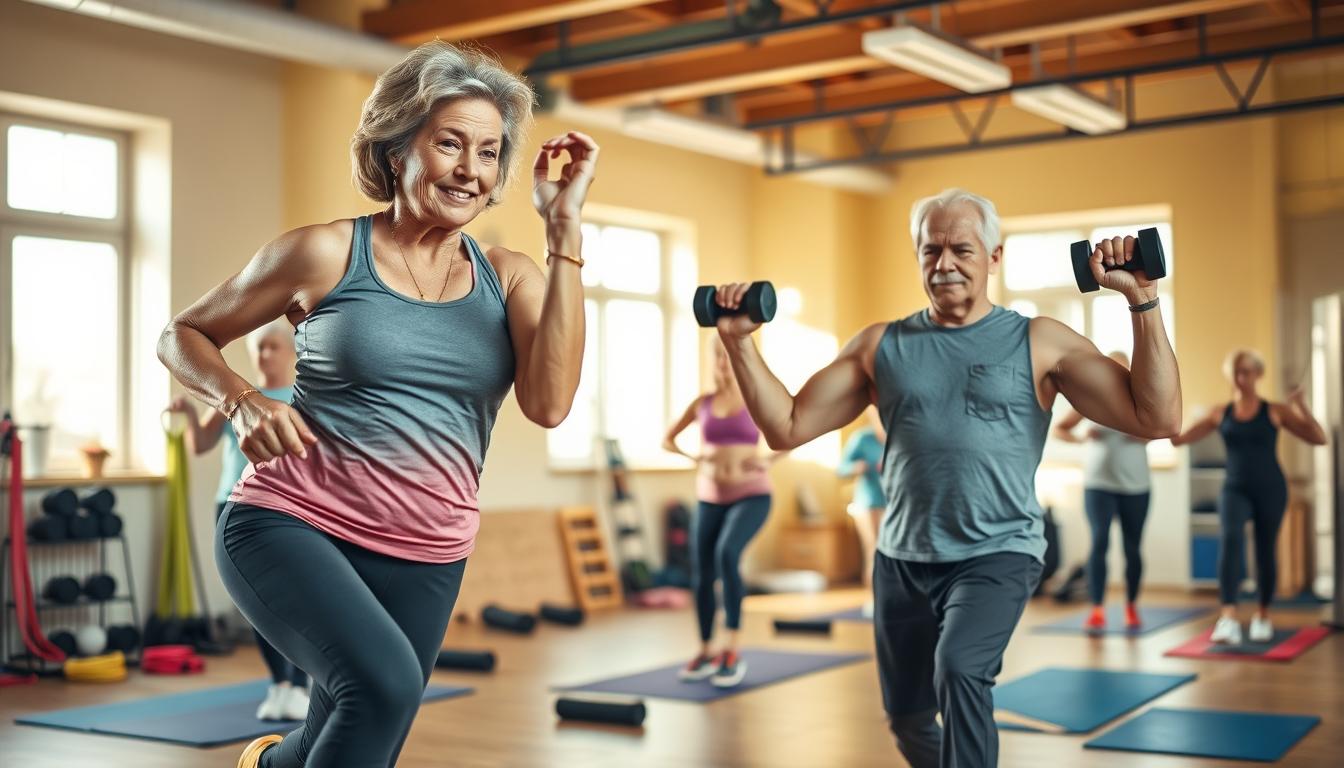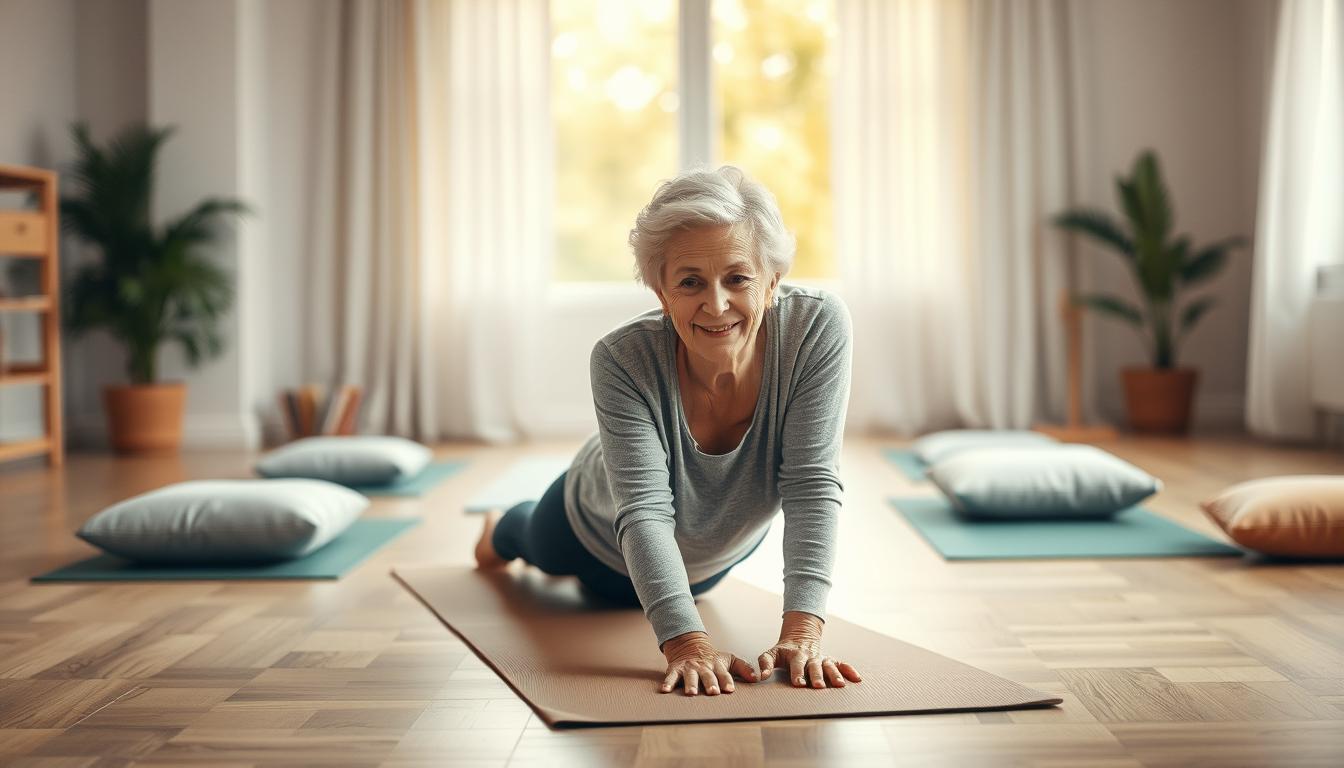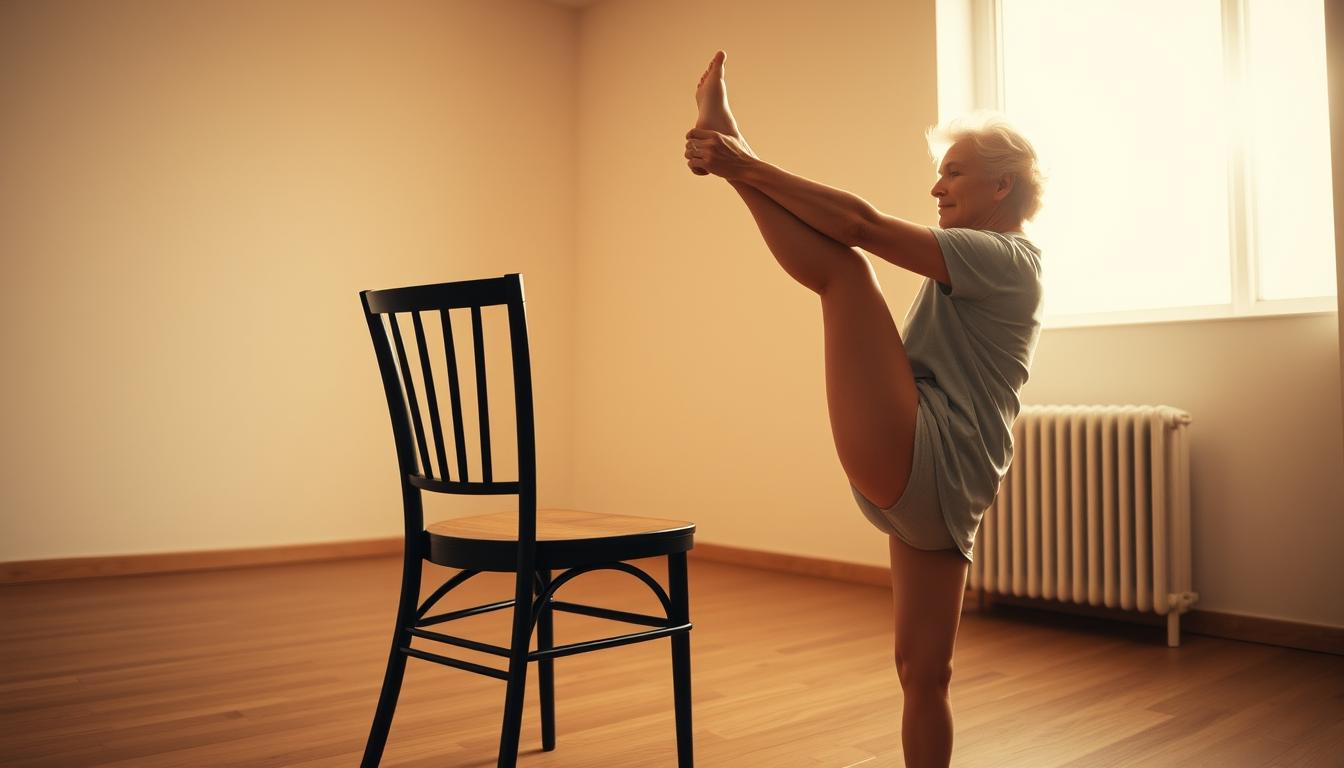You can boost heart health, build muscle, and feel stronger in just 20 minutes a day—no marathons required. I’ve seen 70-year-olds outpace gym rats using timed interval exercises that match their energy levels. Think: 30 seconds of marching in place, followed by a minute of slow stretching. Repeat. That’s HIIT (high-intensity interval training) without the intimidation.
Here’s the kicker: A Journal of Aging study found older adults doing 10-minute HIIT sessions twice weekly improved stamina faster than those jogging daily. The secret? Short bursts of effort—like arm circles or seated leg lifts—spike your heart rate, then let you recover. No fancy equipment, just your living room and a kitchen timer.
When I started modifying these workouts for my yoga class (yes, even chair warriors can HIIT it hard), Betty, 68, joked, “This beats my bingo-night cardio!” She now does 15-second speed walks to her mailbox, rests, then repeats. That’s the beauty: You control the “sweat scale.”
Let’s be real—nobody wants to gasp like a fish out of water. But swapping hour-long routines for smart, snappy sessions? That’s how you keep joints happy while shocking muscles into action. Next up: My go-to moves that’ll make you say, “Wait, this counts as exercise?!”
Essential Safety Measures for High Intensity Workouts for Seniors
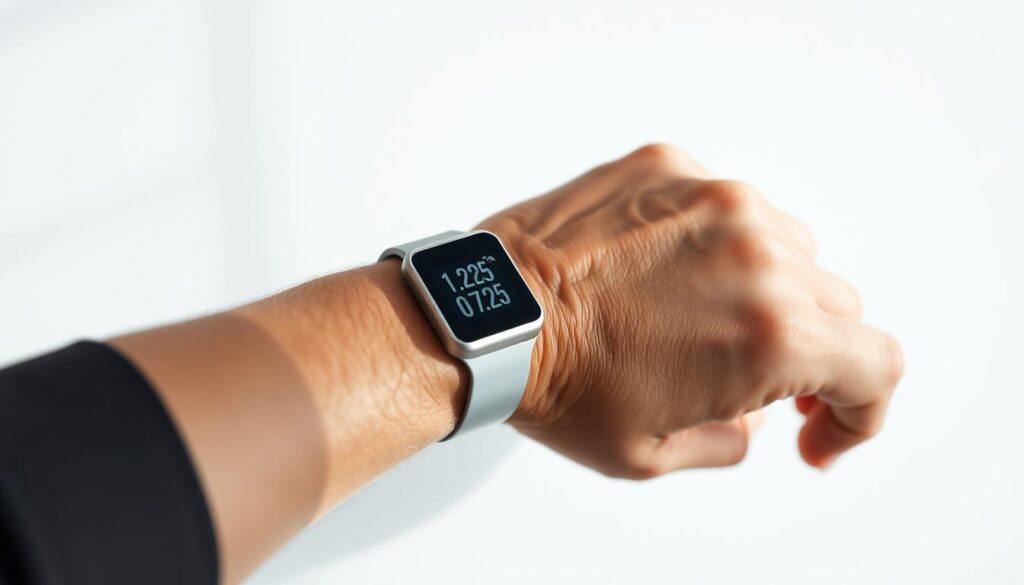
Let me tell you about Martha—a 72-year-old client who thought jumping into quick-paced exercise meant copying YouTube tutorials. After two weeks of knee pain, we sat down with her cardiologist. That conversation changed everything. Now she thrives with modified routines that match her arthritis limitations.
Team Up With Your Health Squad
Always start with a pro’s green light. I’ve seen trainers spot hidden risks—like how rapid arm swings might strain shoulders if you’ve had rotator cuff issues. True story: My colleague helped a client swap box jumps for step-ups after noticing their irregular heartbeat pattern mid-session.
| Professional Guidance | Self-Guided Approach | Why It Matters |
|---|---|---|
| Customized warm-ups | Generic stretches | Prevents muscle pulls |
| Heart rate tracking | Guessing exertion levels | Avoids overexertion |
| Equipment adjustments | One-size-fits-all gear | Protects joints |
Listen to Your Body’s Signals
Your neighbor’s 30-second sprint intervals might wreck your hips. Start with 10-second efforts instead—like power-walking to your favorite mailbox. Recovery matters more than speed: Try 2 minutes of slow marching after each burst. Key tip: If you can’t chat during recovery, dial it back.
Remember Bob from my Silver Sneakers class? He thought pushing through dizziness showed grit. Turns out his blood pressure medication needed timing adjustments. Now he exercises at 10 AM sharp—with a heart rate monitor beeping reminders to hydrate.
Real Results: HIIT Benefits and Practical Examples

Did you know a 103-year-old cyclist shattered endurance records using principles similar to HIIT? Robert Marchand pedaled 14 miles in one hour—proof that age doesn’t cap your potential. Science backs this up: A Medicine & Science in Sports study found seniors doing 10-minute sessions twice weekly boosted testosterone levels by 17%, improving muscle repair and energy.
Boosting Cardiovascular Health and Muscle Strength
Here’s what thrills me—those quick bursts of effort rewire your heart. Participants in a 2023 trial saw 22% better blood flow after 8 weeks of 20-second stair climbs followed by 40-second rests. Their secret? Micro-intervals that feel manageable but pack a punch.
- Chair squats (5 reps) + 1-minute marching = stronger quads
- Wall push-ups (8 reps) + slow breathing = better posture
- 30-second speed walks + 90-second recovery = lower blood glucose
My client Edna, 71, combines these moves while watching her grandkids. “I can lift the toddler now without my knees buckling,” she told me last week. That’s functional strength in action.
Enhancing Mobility with Everyday Movements
Forget fancy gear—your living room is your gym. Try “commercial break HIIT”: Stand up/sit down rapidly during ads, then rest when the show resumes. Research shows this approach improves balance 43% faster than traditional workouts.
Want to level up? Pair these routines with low-impact fitness strategies for joint-friendly gains. One golfer in my program added 18 yards to his drive using modified lunges between holes.
Why does this matter to me? Because watching 80-year-olds outpace their grandkids in park races never gets old. Your body’s resilience will shock you—if you dare to try.
Tailoring Your HIIT Routine for Optimal Outcomes
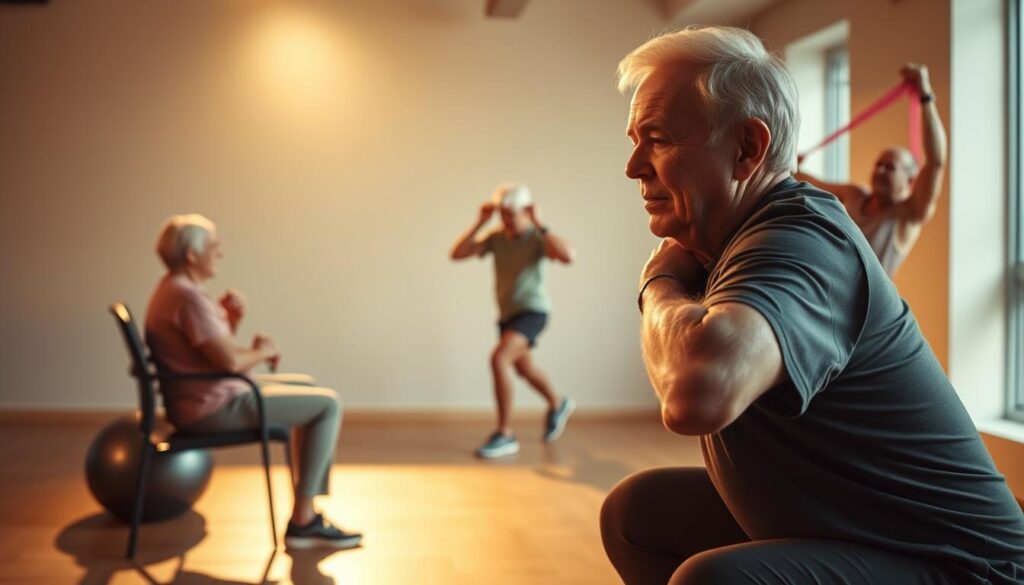
When my neighbor Frank started his HIIT journey at 68, he made one game-changing move: he timed his tea breaks. Instead of guessing recovery periods, he used his microwave’s timer. That’s the beauty of customization—your fitness plan should fit your life, not the other way around.
Modifying Intensity and Recovery Intervals
Start by playing with dose (effort level) and density (how often you push). If 30-second intervals feel brutal, try 15 seconds of brisk arm swings followed by 90 seconds of slow marching. Research shows older adults improve fastest with 1:3 work-to-rest ratios early on.
Here’s my rule: If you can hum “Happy Birthday” during recovery, you’re golden. Progress by adding 5 seconds to your active intervals weekly. One client went from 20-second chair squats to full-minute reps in 12 weeks—without knee strain.
Integrating Low-Impact Alternatives for Joint-Friendly Exercise
Swap jumps for step-and-reach moves using a sturdy kitchen chair. Seated leg extensions or wall-assisted lunges protect hips while building muscle. A 2024 study found these modifications reduce injury risk by 61% compared to standard HIIT.
Pro tip: Use household items as gear. Fill empty milk jugs with water for light weights. Track progress through daily wins—like climbing stairs without handrail reliance. Your body’s feedback trumps any stopwatch.
Remember: HIIT isn’t about suffering. It’s about smart challenges that leave you energized, not exhausted. Start where you are, use what you have, and let your routine evolve as your strength does.
Wrapping Up: Staying Consistent Without Overdoing It
Joe Friel once told me, “Progress in fitness is measured in months, not minutes.” That stuck. I’ve seen clients transform their health by treating HIIT like a slow-cooker recipe—gentle heat over time yields tender results. Your routine thrives on rhythm, not racecar speeds.
Here’s the secret sauce: Schedule two or three 10-minute workouts weekly. Pair them with walks or gardening—activity stacking keeps joints happy. My 78-year-old yogi friend does calf raises while brushing her teeth. Exercise sneaks into life that way.
Track progress through small wins. Can you do one more wall push-up this week? Add five seconds to your intervals? Celebrate that. Research shows adults who focus on gradual gains build muscle 31% faster than those chasing daily PRs.
Remember: Your body isn’t a sprint machine—it’s a wise old oak. Water it consistently, and watch energy branches spread. Now go set that kitchen timer. Maybe start with…
